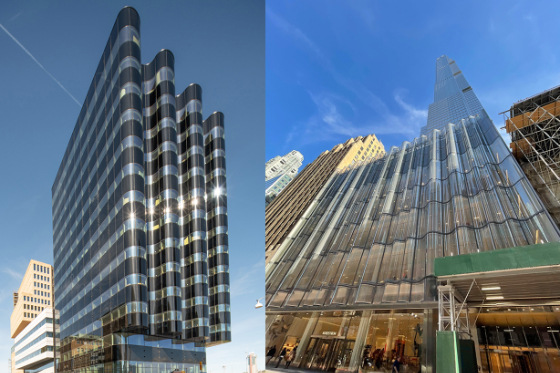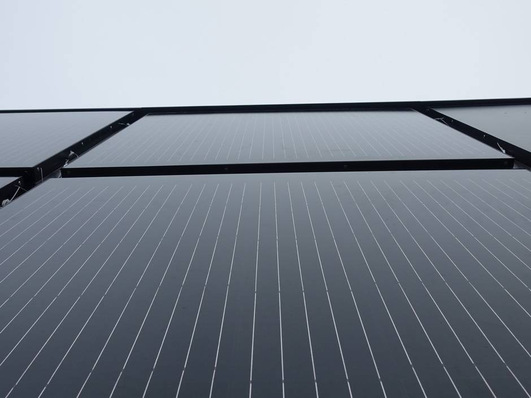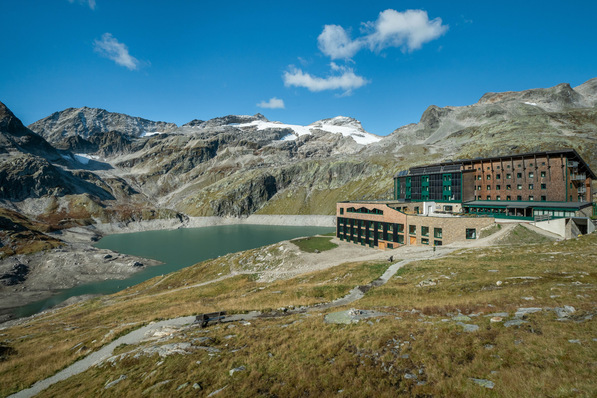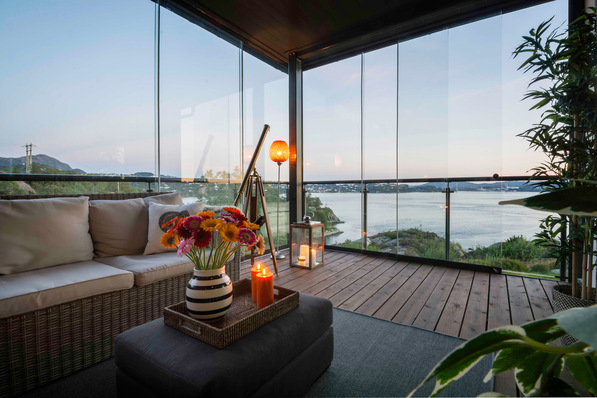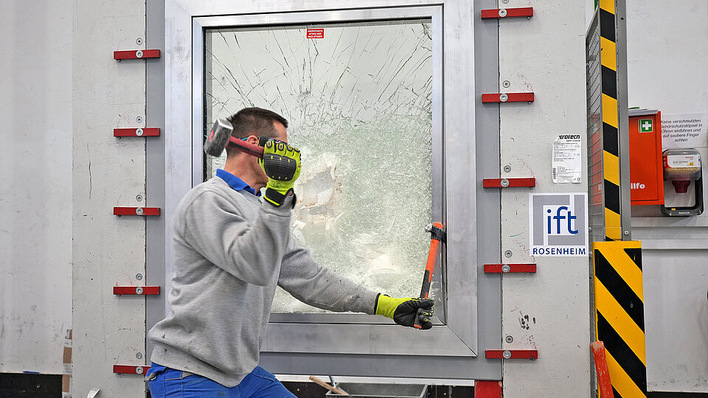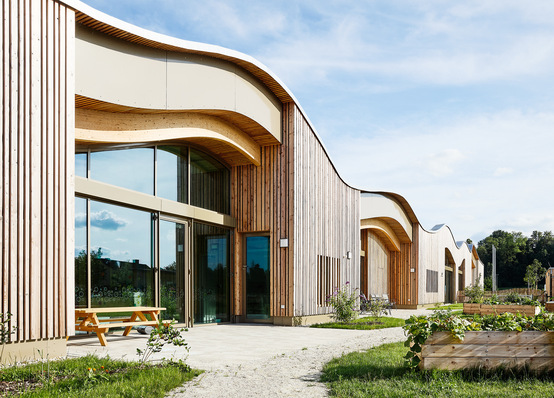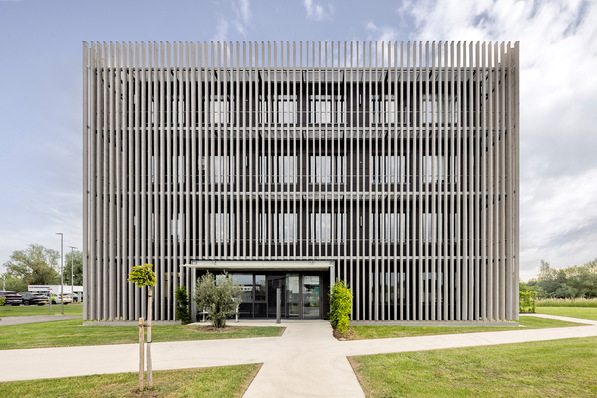Glasstec has regularly organized the Engineered Transparency conference since 2010 to discuss the latest developments. Christoph Rubel, technical manager at Edgetech Europe GmbH, was one of the speakers at the 2021 event. His input on the contribution of the flexible spacer Super Spacer to the realization of facades with large, curved insulating glass elements can also be applied to Gothenburg's Våghuset and the Nordstrom flagship store in New York.
Facade recalls maritime heritage
The elemental facade of the BREEAM-certified Våghuset office and commercial building in Gothenburg's new Masthuggskajen district clearly demonstrates how glass can be used as a creative design element while achieving its energy goals.
The building with its rounded edges has reflective glazing made of cylindrically curved elements, with two-tone stripes and alternate between concave and convex; a tribute to the maritime heritage of Gothenburg.
The "Wave House" is a truly European project
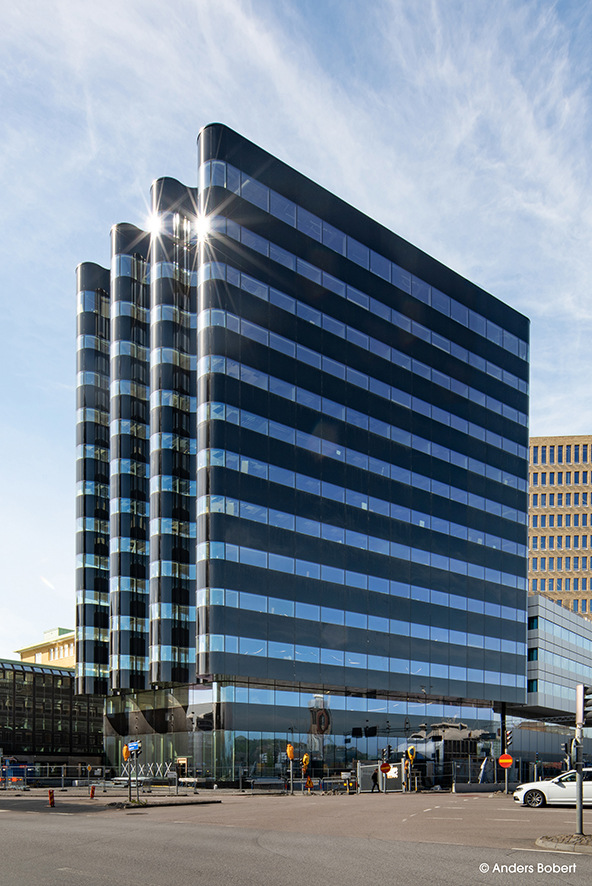
Edgetech Europe
Våghuset was designed by the largest Scandinavian architectural firm White Arkitekter from Gothenburg, the facade was realized by Staticus in Lithuania, the curved profiles were manufactured in Denmark and the glazing in Germany and Poland. The Swedish company NCC AB was responsible for project development and construction.
"The fact that spacers from Heinsberg are also used in the curved insulating glass elements is mainly due to manufacturing reasons," explains Christoph Rubel, "Only flexible spacers such as Super Spacer can precisely follow the curvature of the cylindrically shaped glass. Since curved insulating glass is virtually always handmade, it must also be possible to apply the spacer manually."
No additional solar shading needed thanks to selective Guardian glass
Flintermann Glasveredelungs GmbH from Lower Saxony had delivered around 300 curved insulating glass units to Lithuania for installation. They are composed of 2 x 5 mm laminated float glass with SunGuard SNX 60 solar control coating, TriSealTM Super Spacer Flex 20 mm and 10 mm float glass. As a standard double glazing, the highly selective Guardian glass lets in 60 per cent of the natural daylight, but only 29 per cent of the solar heat. Therefore, additional solar shading can be dispensed with in Våghuset.
"The special feature of this project was the smooth change from concave to convex. A large part of the units had a step all around. The inner pane was always smaller so that it could be recessed into the unitized facade," explains Robin Dorn, curved glass sales manager at Flintermann.
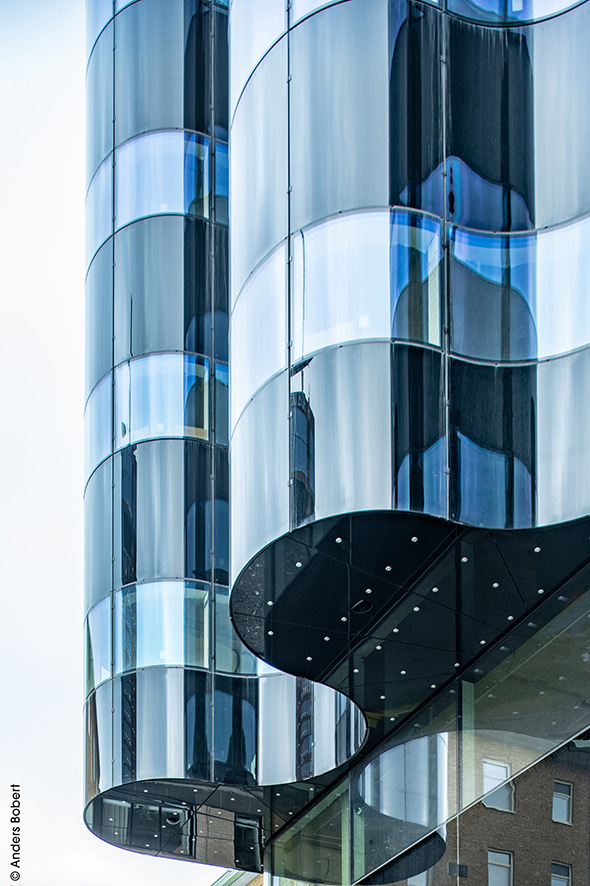
Edgetech Europe
Sustainability as a driving force for facade design
The combination of WICTEC EL evo for the element system and 50SG for the stick system enable the appearance of a homogeneous, glass-flush structural glazing facade. Perimeter lighting is integrated into the facade profiles on all 13 storey levels to make the building's form visible even in the evening and during the winter months.
[Warm edge for MOL Campus in Budapest]
In front of the thermal insulation, single spandrel glasses with opaque Blackpearl coating are installed up to 1,563 mm high and up to 2,688 mm wide. The transparent window strips consist of insulating glass units up to 4,307 mm high and up to 2,441 mm wide. A Ucw value of ≤ 0.5 W/m2 was specified for the planar triple facade elements and a Ucw value of ≤ 0.65 W/m2 for the curved double elements. At the same time, even under Nordic conditions of -15°C and 3.4 m/s wind load on the outside and +20°C/30% RH on the inside, condensation must not form on panes under any circumstances.
Curved insulating glass without vertical supports
Using glazing, even as a structural element, to maximize daylight penetration is now a given. But the question of how to take this transparency to the extreme with ever-larger panes and without visible mullion-and-transom structures continues to preoccupy architects, facade engineers and the glass industry. Larger pane sizes naturally mean thicker glass and lower light transmittance. Curved shapes, which provide increased stiffness even with thinner glass due to the shell support effect, are often the solution.
"Cylindrically curved insulating glass today is taking on more and more load-bearing functions to avoid mullions or vertical support beams in the facade structure," Christoph Rubel says. The space between the panes must be kept as small as possible in order to meet the high thermal insulation requirements and at the same time achieve a narrow, vertical glass edge seal. In addition, while curved insulating glass units are more rigid, they are also more sensitive to climatic loads such as wind and solar radiation.
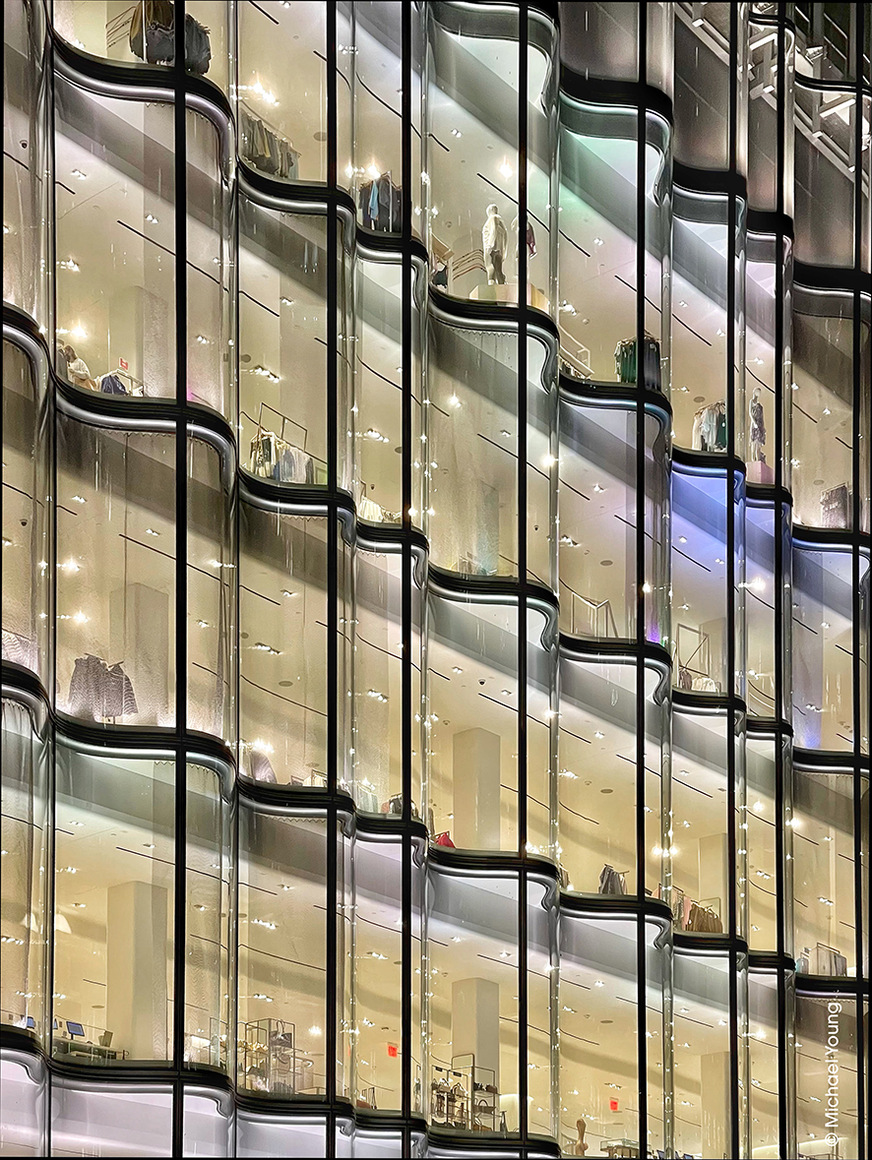
Edgetech Europe
Wave facade of the Nordstrom Flagship store in New York
In the facade of the Nordstrom Flagship store, which is located in the podium of New York's Central Park Tower, a total of 254 glass elements up to 6 m high form the individual storey levels without any visible vertical connection. The architectural firm James Carpenter Design Associates was responsible for the design of the 45 m wide and 38 m high facade at the corner of Broadway and 57th Street.
In this case, four-layer laminated glass with tight radii and a ceramic frit surface was produced using a gravity bending process. To also play it safe when it comes to seismic risk, facade consultant Surface Design Group incorporated a lateral slip joint into the curved profiles to give the glass elements play when subjected to large loads.
[Curved glass for this copper facade]
The flexible Super Spacer spacers can also be applied by robots in automatic lines. Joachim Stoss concludes: "Large-format and expensive insulating glass elements have to be manufactured with high quality and precision, often with three or even more panes, in order to meet the requirements for thermal insulation, safety or acoustics. The larger and heavier the insulating glass, the more difficult it is to handle during production. Super Spacer holds the edge seal in place virtually immediately after application and guarantees maximum precision and parallelism of the panes in both automated and manual processing."







